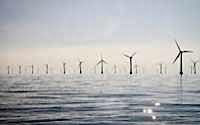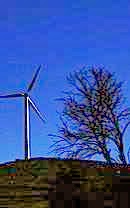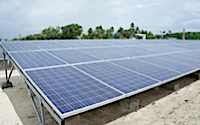www.smh.com.au
19 Nov 2011
The federal Minister for Energy,
Martin Ferguson, is often criticised but he's right about this: the
coal seam gas industry has grown too fast. We have not done our homework before issuing approvals for this $50 billion-plus export industry-on the possible groundwater and land-use impact, on what to do with the millions of tonnes of salt left over, or the impact on
Gladstone harbour and the
Great Barrier Reef. Crucially, we have rushed to develop
coal seam gas reserves as a cleaner alternative to
coal, assuming it will help reduce
greenhouse gas emissions and tackle climate change. But will
coal seam gas reduce emissions? By how much? We don't actually know.
Recent research into fugitive emissions, including peer-reviewed articles by
Cornell University's Robert Howarth and the US
National Centre for Atmospheric Research's Tom Wigley, both published in Climate Change Letters, have found unconventional plays like
coal seam gas or
shale gas may deliver no greenhouse benefit at all, or even make things worse.
If that turns out to be right, gas may be an obstacle rather than a bridge to a decarbonised future. With the
International Energy Agency warning this month that the energy infrastructure we build over the next five years will determine whether the world is able to limit global warming to 2°, it's hard to think of a more critical climate policy question-or one with more money riding on it. Early this year the
oil and gas industry lobby group, the
Australian Petroleum Production & Exploration Association (
APPEA), commissioned research by engineering consultancy
WorleyParsons on the life cycle emissions of
coal seam gas versus
coal when exported and burned in China.
APPEA did something strange. It only released the executive summary. Why? Because, according to some of its members, there were scenarios which showed how
coal seam gas might emit more
greenhouse gasses than
coal. At worst, if burned in the least efficient ''peaking'' open-cycle turbines,
coal seam gas was up to 44% dirtier than the newest, most efficient
coal-fired plant. Some inside Worley-and the better
coal seam gas companies, too-were unhappy with the association's handling of the report. There was pressure to get it out. The executive director of the think tank
Beyond Zero Emissions, Matthew Wright, got wind of the industry disquiet and had an idea: commission a separate study by Worley-in fact, widen its scope-and get the results into the public domain that way. A contract was drawn up and a price agreed: $50,000. Wright believes the work was done and the report drafted. Somewhere, things went off the rails.
Cold feet at Worley, perhaps? All week, starting in Monday's Age and on
ABC Radio National's Breakfast program and running from there, the accusations have flown thick and fast. Worley says it and Beyond Zero mutually agreed to drop the contract, no fee being payable. Instead, the same research would be published in a peer-reviewed journal, Energies. Wright flatly denies he ever agreed to that-he still wants the report he commissioned-and claims Worley is suppressing the report to stay on side with the
coal seam gas industry which gives it contracts worth hundreds of millions of dollars. Worley rejects that outright and says everything Beyond Zero commissioned-''the full box and dice'', a spokesman told me-will be in the Energies paper. How, asks Wright, when his report had a broader scope than the
Australian Petroleum Production & Exploration Association's 80-odd page document, and what peer-reviewed journal would publish all that? As it happened, a fortnight ago
APPEA did finally release its own full, original report by Worley. Some media took
APPEA's line, saying it proved gas was cleaner; others focused on the previously unreleased information, including less flattering gas-versus-
coal scenarios. It's now online.
On Tuesday the
Merrill Lynch oil and gas analyst David Heard weighed in with a six-page note to clients titled: ''Green gas debate: who is hiding the fugitives?'' It pulls the
APPEA report apart. For a start, the report assumes
coal seam gas/
liquefied natural gas projects apply best practice in
greenhouse gas and environmental management, especially to prevention of venting and leaks in upstream operations. Extreme scenarios for
coal seam gas venting and leakage were excluded. Extreme was defined to mean ''other than best practice''. But Heard records his personal observation of a
Santos drilling operation in the
Cooper Basin (not a
coal seam gas well, as it happens) where after
fracking and in the flow-back phase ''the well vents a mixture of
fracking fluid and gas direct to atmosphere in an unconstrained manner for days''. Heard's colleagues in the US have found likewise.
Then Heard noted how our
National Greenhouse and Energy Reporting System (
NGERS) allowed the
coal seam gas companies to rely on a 2004 US industry-derived document, the American Petroleum Institute's Compendium of Greenhouse Gas Emissions Methodologies for the Oil and Gas Industry, which explicitly stated it was ''neither a standard nor a recommended practice for the development of emissions inventories''. The compendium contains generic assumptions, Heard noted, which may be outdated given the rapid development of unconventional gas extraction, and inapplicable in an Australian context.
APPEA's report admits, on page eight, ''the large-scale
CSG/
LNG industry in Queensland is new and emissions are only projections subject to high uncertainties in some areas''. Under our
emissions trading scheme, carbon price liability is determined according to the emissions reported under
NGERS system, including fugitive emissions. Ferguson says leave it to the market, guided by the carbon price. But relying on the Compendium could lead companies to understate emissions and ignore any carbon price signal. If, for example, the
coal seam gas companies just use a rule of thumb-a broad average at the end of the year by some junior accountant asked to 'multiply the number of wells we've drilled by a number in a 2004 US document'-there is no price signal.
We need better science on the emissions from
coal seam gas and, ultimately, Heard's note backs Wright, expressing concern at the alleged suppression of Worley's report for Beyond Zero, and concluding such a thorough independent expert assessment of full life-cycle emissions would be worthwhile. This week Ferguson ruled out the government commissioning any such report. A spokesman for the Climate Change Minister,
Greg Combet, conceded the
NGERS probably relied on an estimation approach to emissions from
coal seam gas extraction, but said the system allowed for annual updating of estimation methods as new science came in. Lastly, Heard's note criticises
APPEA's assumption that gas substitutes for inefficient
coal in baseload generation in China. This may not be correct, he writes, ''gas is not really competing with
coal at all''.
Heard's concern, on his clients' behalf, is not so much that the
coal seam gas companies could face higher-than-expected carbon price liabilities if we had a truer picture of emissions. Rather, it's that amid an increasingly nasty debate on the roll-out of
coal seam gas in Queensland and NSW, and given these projects are on thin ice politically as they push east coast gas prices higher by linking us to international markets, the last thing the industry needs is to lose the one thing it had going for it: an apparent benefit in tackling climate change. The gas projects are counting on expansion, to build second and subsequent liquefaction ''trains'', and approvals may prove harder to come by. If the greenhouse benefit claims turn out to be false, it's bad news for the
coal seam gas companies.
paddy.manning@fairfaxmedia.com.au
Twitter: @gpaddymanning
 E.ON is making another huge leap into green energy with a multi-billion investment of EUR7 billion for three new wind farms in the North and Baltic Seas. In the Baltic Sea, off Sweden's southern coast, E.ON is building Kårehamn wind farm which will become operational in 2013. Kårehamn will have a capacity of 48 MW and is costing around EUR120 million to build.
E.ON is making another huge leap into green energy with a multi-billion investment of EUR7 billion for three new wind farms in the North and Baltic Seas. In the Baltic Sea, off Sweden's southern coast, E.ON is building Kårehamn wind farm which will become operational in 2013. Kårehamn will have a capacity of 48 MW and is costing around EUR120 million to build.





